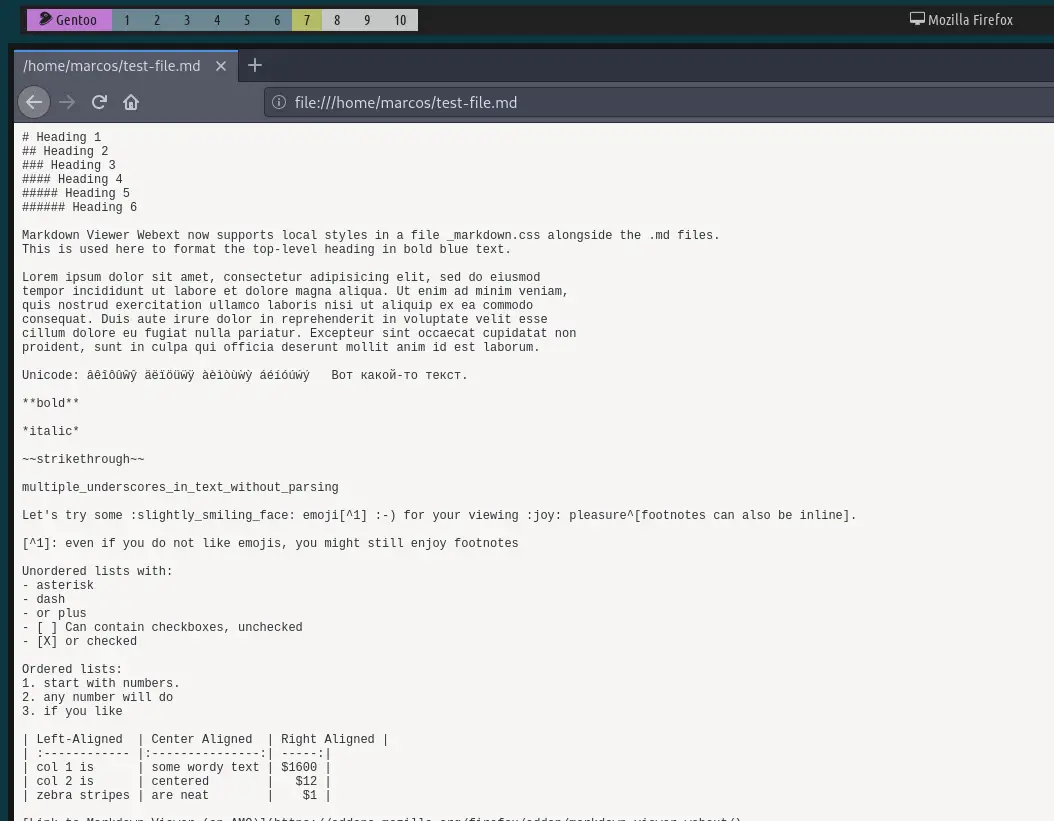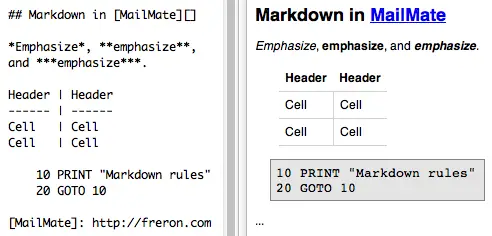
What is a .MD file?
The .md or .MARKDOWN file extension is used to save text files written with Markdown language dialects. MD files are plain text files that employ the Markdown language, which includes inline text symbols that define how a text might be structured, including indents, table formatting, fonts, and headers.
A tool called Markdown can be used to convert MD files to HTML. John Gruber publishes the Markdown language.
{autotoc}
MD files are developer files that are primarily used by Markdown to convert text files to HTML versions so that users may produce files that are simple to read and write.
The apps that can open an .md file are as follows:
- Notepad2
- Microsoft Notepad
- Microsoft WordPad
- Apple TextEdit
A word of caution:.md files should not have their extension changed. If this is the case, this will not change the file type because special conversion software exists to convert files from one kind to another.
As already said .MD files are files written with the Markdown language program. Markdown is a simple markup language designed for one purpose: formatting text on the web using simple text formatting grammar.
Let's be clear: Markdown isn't a replacement for HTML because its syntax is so simple and only contains a small subset of HTML tags. The goal of Markdown is to make prose easier to read, write, and edit. To put it another way, HTML is a publishing format, whereas Markdown is a writing format.
Markdown is now one of the most widely used markup languages in the world.
Formatting words and phrases in Microsoft Word is done by clicking buttons, and the changes are immediately visible. Markdown, on the other hand, isn't like that.
Markdown syntax is applied to the text when a Markdown formatted file is created to specify which words and phrases may appear differently. To represent a heading, for example, a number sign is appended before it (e.g. # Heading One). Two asterisks are placed before and after the sentence to make it bold (e.g., this text is bold).
After a time in the text, the markdown syntax is visible.

Check out the following example of Markdown:
It's very easy to make some words **bold** and other words *italic* with Markdown. You can even [link to Google!](http://google.com)
How Markdown Documentation Files Can Be Opened and Converted
Because MD files are just ordinary text documents, you may open them with any text editor on Windows, such as Notepad or WordPad. You can use one of the other free text editors on our list instead. Here are some additional specialist Markdown file opening and conversion tools:
- MarkPad is a file viewer and editor that supports MD, MDOWN, MARKDOWN, and MKD formats.
- A application named Markdown can be used to convert MD to HTML. John Gruber, the author of the Markdown language, has released it.
- The Markdown Preview Plus addon for the Chrome browser offers yet another MD-to-HTML converter.
- Use Markdowntopdf.com's free online Markdown converter 2 convert MD to PDF.
- Dillinger is a web-based MD editor that you may use in your browser. Markdown files can also be converted to HTML and PDF.
- To convert the MD file to the DOCX MS Word format, use CloudConvert. Other text-based forms, such as HTML TXT, RTF, and PDF, are also supported.
- Pandoc is another online Markdown converter worth checking out. DocBook v5, ICML, LaTeX, S5, and MediaWiki are among the formats it supports.
A Short History
The Markdown language was designed in 2004 by John Gruber and Aaron Swartz with the goal of allowing individuals to "write in a simple to read and write plain text format with the option of converting it to XHTML or HTML."
The purpose of its design is readability: the language is legible as is, without looking like it's been tagged or formatted, as in markup languages like RTF or HTML, where tags and formatting instructions are visible. The fundamental concept is based on existing norms for highlighting plain text in email.
Others have since re-implemented Markdown, such as in a Perl module available on CPAN and in a variety of other programming languages. It's released under a BSD-style license and comes pre-installed with or as a plugin for a number of content management systems.
Detailed Technical Information
When writing in Markdown, the text is first saved in a plaintext file with the extension.md or.markdown, and then processed using a Markdown application such as Dillinger to convert Markdown formatted text to HTML for display in web browsers.
A Markdown processor (also known as a "parser" or "implementation") is used by Markdown applications to convert Markdown-formatted text to HTML format. The process flow diagram is as follows:
In a nutshell, it's a four-step procedure:
- To begin, create Markdown files with an extension of.md or.markdown using a text editor or a Markdown application.
- A Markdown application is then used to open the Markdown file.
- To convert a Markdown file to an HTML document, utilize the Markdown program.
- The HTML file is then viewed in a web browser or converted to another file type, such as PDF, using a Markdown application.
Markdown makes it simple to take notes, write content for websites, create print-ready documents, publish books, create presentations, and create documents.
Some of the markdown versions had such an impact on other versions that they are frequently mentioned as part of other versions. Libraries, for example, mention CommonMark support (GFM). Let's take a quick look at them.
Because the open source sharing network Github accepted and enhanced the language with a version called Github Flavored Markup (GFM), which includes walled codeblocks, URL aultolinking, strikethrough, tables, and generate to-dos, GFM Markdown has become extremely popular among developers.
Developers of CommonMark Markdown recently attempted to standardize markdown by working together to build a more comprehensive version, tests, and documentation for the language, which they dubbed CommonMark. This format is relatively new and lacks a number of features, although many MultiMarkdown features will be introduced in the near future.
Multi-Markdown
Multi-Markdown enhanced the language with new capabilities that are supported by other versions. It was originally written in Perl, but it was eventually ported to C. Fencing, syntax highlighting, tables, metadata, fragments/cross references links, footnotes, strikethrough, definition lists, and math are all supported.
Frequently Asked Questions
What exactly are GitHub MD files?
GitHub is a programmers' and developers' cloud-based internet service used to store and share code. It's a place where developers can keep track of, manage, and store modifications to their projects. When working with GitHub, programmers and developers frequently utilize the MD file extension for README files in the Markdown Documentation file format (readme.md).
What is an MD file and how can I make one?
To produce a Markdown Documentation file, which is the most frequent MD file type, open a text editor, create a new file, and name it Readme.md or anything else that makes sense, then save it with the.md extension. Then use the MD format to create whatever markdown document you want to create.
How to open an MD file?
An MD file is usually opened on a website which is able to render Markdown syntax. For example, Github readme files use the Markdown syntax to render their readme files formatted as the author desires. An .MD file can be opened with any text filter editor, because it is a simple text file.
